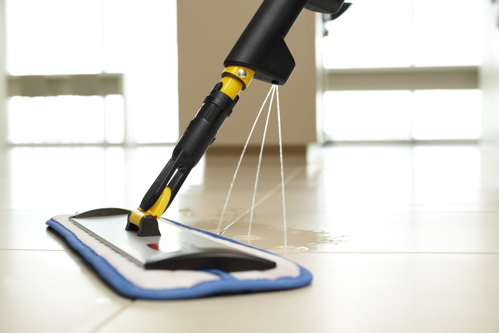
Housekeepers are on their feet all day, which puts them at risk of various musculoskeletal strains and injuries. Repetitive movements and improper techniques put housekeepers at risk of damage to the nerves, muscles and ligaments. In addition, slip-and-fall injuries can cause serious damage requiring time off work to recover.
According to Safe Work Australia, cleaners have a higher rate of workplace injury than workers in the construction and mining industries. Roughly 11.4 worker compensation claims are made per million work hours in the cleaning industry, compared to 9.5 for construction workers and 7.5 for miners
Preventative stretching routines and proper form when carrying out cleaning tasks can significantly reduce the risk of injury among housekeepers. The right technique, combined with ergonomic equipment, can have a beneficial impact on rates of workplace sprains and strains.
What are the risks of improper cleaning techniques?
According to the International Union of Food, Agricultural, Hotel, Restaurant, Catering, Tobacco and Allied Workers' Associations (IUF), hotel housekeepers have the highest rate of musculoskeletal injuries among service sector employees. Common types of injuries include:

3 tasks that can potentially injure cleaning staff
When performed with incorrect posture, these tasks can result in cumulative trauma injuries:
1. Mopping
Poor posture when mopping floors increases the risk of back injuries. For example, mopping with a bent or hunched back can lead to muscle strains, pinched nerves and irritation along the spinal column.
Replacing traditional wet mops with modern flat mops can greatly reduce the risk of injury. In fact, a workplace mopping ergonomic assessment conducted at the Royal Melbourne Hospital found that the use of flat mops resulted in 20% lower movement risk. Flat mops allow for movements closer to the body's core, reducing time spent outside the optimal range of motion by 49%
2. Making beds
Housekeepers may make more than a dozen beds per day. This becomes a risk when they stand and bend forward to reach down towards the bed. Lifting the mattress with one hand while tucking the bedsheet with the other puts the musculoskeletal system in an awkward position.
Housekeepers should avoid stooping and bending when making beds. A better posture is to bend at the knees and crouch briefly while tucking the bedsheet under the mattress. Working with another housekeeper can greatly reduce strain on the lower back. Frequent breaks can also reduce the likelihood of repetitive strain injuries.
3. Dusting high surfaces
Reaching for high surfaces can lead to pain and stiffness in the neck, shoulders, arms and upper back. In addition, standing directly beneath the surface being dusted can result in debris falling into the eyes.
Housekeepers should limit the time they spend on over-the-shoulder work. Extendable dusting wands can help cleaners to reach high surfaces without moving beyond the optimal range of motion. In addition, microfibre dusting tools can reduce the risk of falling debris, but it's important to never stand directly beneath the area being cleaned.
For more information about cleaning best practises, check out our resource centre.